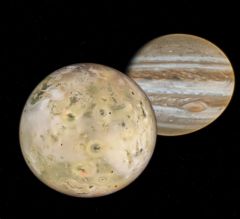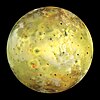Difference between revisions of "Io"
Jump to navigation
Jump to search
(Added table items.) |
|||
| (21 intermediate revisions by 2 users not shown) | |||
| Line 1: | Line 1: | ||
| − | + | {{Nsat-Stub}} | |
| − | |||
| − | |||
| − | |||
| − | |||
| − | |||
| − | |||
| − | |||
| − | |||
| − | |||
| − | |||
| − | |||
| − | |||
| − | |||
| − | |||
| − | |||
| − | |||
| − | |||
| − | |||
| − | |||
| − | |||
| − | |||
| − | |||
| − | |||
| − | |||
| − | |||
| − | |||
| − | |||
| − | |||
| − | |||
| − | |||
| − | |||
| − | |||
| − | |||
| − | |||
| − | |||
| − | |||
| − | |||
| − | |||
| − | |||
| − | |||
| − | |||
| − | |||
| − | |||
| − | |||
| − | |||
| − | |||
| − | |||
| − | |||
| − | |||
| − | |||
| − | |||
| − | |||
| − | |||
| − | }} | ||
| − | |||
| − | |||
| − | |||
| − | |||
| − | |||
| − | |||
| − | |||
| − | |||
| − | |||
| − | |||
| − | |||
| − | |||
| − | |||
| − | === | + | {| cellpadding="2" cellspacing="0" style="margin:25px 0 0 10px; border:3px solid lightsteelblue;width:250px; font-size:90%; font-family:'Arial','Helvetica'; float: right; clear: right;"Template in Orbiter" |
| − | + | !bgcolor="lightsteelblue" colspan="2" align="center" |Io | |
| + | |- | ||
| + | |colspan="2" align="center"|[[Image:IoScrshot.jpg|240px]] | ||
| + | |- | ||
| + | |colspan="2" align="center"|'''Io in Orbiter 2016 with D3D9 client''' | ||
| + | |- | ||
| + | !bgcolor="lightsteelblue" colspan="2"|Designation | ||
| + | |- | ||
| + | |Name||align="right"|Io | ||
| + | |- | ||
| + | |width="30%"|Reference body||align="right" width="30%"|Jupiter | ||
| + | |- | ||
| + | !bgcolor="lightsteelblue" colspan="2"|Planetary mean orbits | ||
| + | |- | ||
| + | |width="30%"|Epoch||align="right" width="50%"|1979.12391832712 (1979 February 14 061605 UTC) | ||
| + | |- | ||
| + | |width="30%"|Semimajor axis (a)||align="right" width="50%"|422025278.692653 m | ||
| + | |- | ||
| + | |width="30%"|Eccentricity (e)||align="right" width="30%"|0.00418867166362767 | ||
| + | |- | ||
| + | |width="30%"|Inclination (i)||align="right" width="30%"|2.18312929° <br> (0.0381027941060868 radian) | ||
| + | |- | ||
| + | |width="30%"|Longitude of the ascending node (LAN, ☊)||align="right" width="30%"|337.6180631° <br> (5.8925468154509 radian) | ||
| + | |- | ||
| + | |width="30%"|Longitude of periapsis (ϖ)||align="right" width="30%"|654.3518983° <br> (11.4205950913623 radian) | ||
| + | |- | ||
| + | |width="30%"|Mean longitude (L)||align="right" width="30%"|737.1542087° <br> (12.8657680372413 radian) | ||
| + | |- | ||
| + | !bgcolor="lightsteelblue" colspan="2"|Selected physical parameters | ||
| + | |- | ||
| + | |width="30%"|Mean radius||align="right" width="30%"|1821 km | ||
| + | |- | ||
| + | |width="30%"|Mass||align="right" width="30%"|8.93×10<sup>22</sup> kg | ||
| + | |- | ||
| + | |width="30%"|SidRotPeriod||align="right" width="3-%"|152841.6 sec (42.456 hours) | ||
| + | |- | ||
| + | |width="30%"|Note||align="right" width="30%"|*Elements given are from Io.cfg (Voyager1Jupiter.zip) | ||
| + | |} | ||
| − | [[ | + | Io is one of [[Jupiter|Jupiter's]] four [[Galilean Moons]]. It is also the only confirmed satellite to have active volcanoes. Its orbit is in a 1:2:4 resonance with [[Europa]] and [[Ganymede]]. |
| − | |||
| − | + | == Io in Orbiter == | |
| + | Io was introduced to [[Orbiter]] in the Orbiter 2002 release, and each version after that. Io's orbit was governed by the Io.cfg file in Orbiter 2002 and later versions until Orbiter 2005 when Vsop87.dll governed Io's orbit. Io is modeled as a sphere 48806 km in diameter with a mass of 8.93×10<sup>22</sup> kg. | ||
| − | + | {|class="wikitable sortable” style="text-align: center" | |
| + | |- | ||
| + | |colspan="8"|<center>'''Orbiter versions and add-ons which include Io'''</center> | ||
| + | |- | ||
| + | !Add-on!!Source!!Version!!Author!!Type!!Release Date!!Compatibility!!Wiki article | ||
| + | |- | ||
| + | |[https://www.orbiter-forum.com/resources/orbiter-2016-torrent-files.5427/ Orbiter 2016 - torrent files]||O-F Resources||2016||martins||Orbiter Download||23 August 2016||Orbiter 2016|| | ||
| + | |- | ||
| + | |[https://www.orbiter-forum.com/resources/orbiter-2016-core-msi-exe-edition.5426/ Orbiter 2016 Core - MSI / EXE edition]||O-F Resources||2016||martins||Orbiter Download||23 August 2016||Orbiter 2016|| | ||
| + | |- | ||
| + | |[https://www.orbiter-forum.com/resources/orbiter-2016-core-zip-edition.5425/ Orbiter 2016 Core - ZIP edition]||O-F Resources||2016||martins||Orbiter download||23 August 2016||Orbiter 2016|| | ||
| + | |- | ||
| + | |[http://orbit.medphys.ucl.ac.uk/download.html Orbiter core package download]<br>(The actual download page for Orbiter 2016)||Orbiter download page||Orbiter 2016||martins||Orbiter download||23 August 2016||Orbiter 2016|| | ||
| + | |- | ||
| + | |[https://www.orbiter-forum.com/resources/celestial-bodies-motion-part-1-4-v2-0-0.132/ Celestial Bodies Motion - Part 1/4 - v2.0.0]||O-F Resources||v2.0.0||cristiapi||Scenery||2 July 2015||*module only|| | ||
| + | |- | ||
| + | |[https://www.orbiter-forum.com/resources/orbiter-2010-p1.5428/ Orbiter 2010-P1]||O-F Resources||100830||martins||Orbiter Download||30 August 2010||Orbiter 2010-P1|| | ||
| + | |- | ||
| + | |[https://www.orbiter-forum.com/resources/orbiter-2010.5429/ Orbiter 2010]||O-F Resources||100606||martins||Orbiter Download||5 June 2010||Orbiter 2010|| | ||
| + | |- | ||
| + | |[https://www.orbiter-forum.com/resources/orbiter-2006-p1.5430/ Orbiter 2006-P1]||O-F Resources||060929||martins||Orbiter Download||29 September 2006||Orbiter 2006-P1|| | ||
| + | |- | ||
| + | |[https://www.orbiter-forum.com/resources/orbiter-2006.5431/ Orbiter 2006]||O-F Resources||060504||martins||Orbiter Download||4 May 2006||Orbiter 2006|| | ||
| + | |- | ||
| + | |[https://library.avsim.net/esearch.php?DLID=&Name=&FileName=outerplanets-050329_update.zip&Author=&CatID=root The Outer Planets 050329 Update]||AVSIM||050329||Rolf Keibel<br>Tony Dunn<br>Carl Romanik||Scenery||30 March 2005|||| | ||
| + | |- | ||
| + | |[https://www.orbiter-forum.com/resources/the-outer-planets-050223-update.2483/ The Outer Planets 050223 Update]||O-F Resources||2005-02-23||VF2_Rolf||Scenery||23 February 2005|||| | ||
| + | |- | ||
| + | |[https://www.orbiter-forum.com/resources/2005-with-p1-patch-files.5432/ 2005 (with P1 patch files)]||O-F Resources||050216||martins||Orbiter Download||16 February 2005||Orbiter 2005|| | ||
| + | |- | ||
| + | |[https://www.orbiter-forum.com/resources/orbiter-2003-p2.5433/ Orbiter 2003-P2]||O-F Resources||031217||martins||Orbiter Download||17 December 2003||Orbiter 2003-P2|| | ||
| + | |- | ||
| + | |[https://www.orbiter-forum.com/resources/orbiter-2003-p1.5434/ Orbiter 2003-P1]||O-F Resources||031105||martins||Orbiter Download||5 November 2003||Orbiter 2003-P1| | ||
| + | |- | ||
| + | |[https://www.orbiter-forum.com/resources/orbiter-2002.5436/ Orbiter 2002]||O-F Resources||020419||martins||Orbiter Download||19 April 2002||Orbiter 2002|| | ||
| + | |} | ||
| − | + | == See also == | |
| + | *[[w:Io (moon)|Io]] in [[w:Wikipedia|Wikipedia]] | ||
| − | + | == Gallery == | |
| + | <gallery widths="100" heights="100"> | ||
| + | IoOrbiter2002.jpg|<center>Io in Orbiter 2002</center> | ||
| + | Io-orbiter2002p3.jpg|<center>Io in Orbiter 2002P3</center> | ||
| + | Io-Orbiter2003P2.jpg|<center>Io in Orbiter 2003P2</center> | ||
| + | Io-Voyager1Jupiterzip-Orbiter2003P2.jpg|<center>Io from ''Voyager1Jupiter.zip'' in Orbiter 2003P2</center> | ||
| + | Io-Orbiter2005P1.jpg|<center>Io in Orbiter 2005P1</center> | ||
| + | Io-Orbiter2006P1.jpg|<center>Io in Orbiter 2006P1</center> | ||
| + | Io-Orbiter2010P1-Orbiter2010P1.jpg|<center>Io in Orbiter 2010P1</center> | ||
| + | IoScrshot.jpg|<center>Io in Orbiter 2016 with D3D9</center> | ||
| + | Io highest resolution true color.jpg|<center>Io as seen by the [[w:Galileo (spacecraft)|Galileo]] spacecraft on 3 July 1999<br>from Wikimedia Commons</center> | ||
| + | Galilean moon Laplace resonance animation 2.gif|<center>Animation of three inner Galilean moons showing orbital resonance<br>from Wikimedia Commons</center> | ||
| + | </gallery> | ||
| − | + | [[Category:Articles]] | |
| − | + | [[Category:Celestial bodies]] | |
| − | + | [[Category:Solar System]] | |
| − | + | [[Category:Natural satellites]] | |
| − | + | [[Category:Satellites of Jupiter]] | |
| − | |||
| − | |||
| − | |||
| − | |||
| − | |||
| − | |||
| − | |||
| − | |||
| − | |||
| − | |||
| − | |||
| − | |||
| − | |||
| − | |||
| − | |||
| − | |||
| − | |||
| − | |||
| − | |||
| − | |||
| − | |||
| − | |||
| − | |||
| − | |||
| − | |||
| − | |||
| − | |||
| − | |||
| − | |||
| − | |||
| − | |||
| − | |||
| − | |||
| − | |||
| − | [[ | ||
| − | [[ | ||
| − | |||
| − | |||
| − | |||
| − | |||
| − | |||
| − | |||
| − | |||
| − | |||
| − | |||
| − | |||
| − | |||
| − | |||
| − | |||
| − | |||
| − | |||
| − | |||
| − | |||
| − | |||
| − | |||
| − | |||
| − | |||
| − | |||
| − | |||
| − | |||
| − | |||
| − | |||
| − | |||
| − | |||
| − | |||
| − | |||
| − | |||
| − | |||
| − | |||
| − | |||
| − | |||
| − | |||
| − | |||
| − | |||
{{JupiterSat}} | {{JupiterSat}} | ||
| − | {{ | + | {{SolarSystem}} |
Latest revision as of 03:19, 12 November 2024
 | This natural satellite related article is a stub. You can help Orbiterwiki by expanding it.
Io is one of Jupiter's four Galilean Moons. It is also the only confirmed satellite to have active volcanoes. Its orbit is in a 1:2:4 resonance with Europa and Ganymede. Io in Orbiter[edit]Io was introduced to Orbiter in the Orbiter 2002 release, and each version after that. Io's orbit was governed by the Io.cfg file in Orbiter 2002 and later versions until Orbiter 2005 when Vsop87.dll governed Io's orbit. Io is modeled as a sphere 48806 km in diameter with a mass of 8.93×1022 kg.
See also[edit]Gallery[edit]
| |||||||||||||||||||||||||||||||||||||||||||||||||||||||||||||||||||||||||||||||||||||||||||||||||||||||||||||||||||||||||||||||||||||||||||||||||










